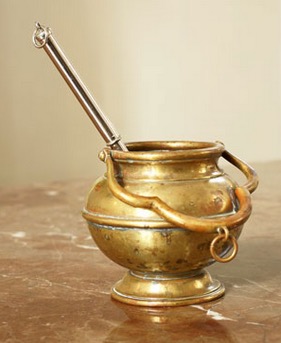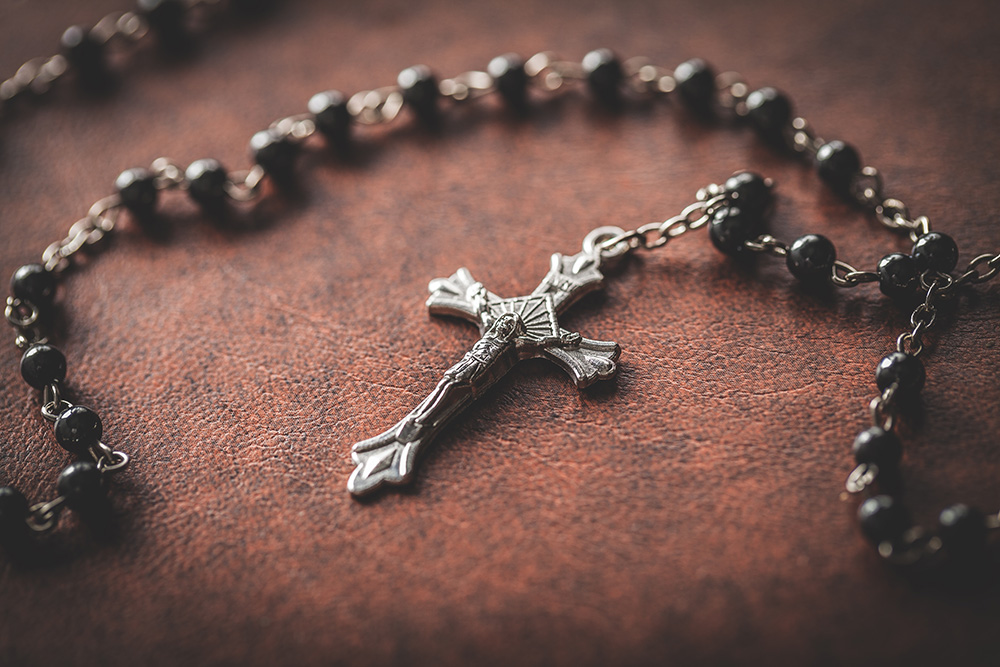While they are similar in name, sacraments and sacramentals have a unique and distinct role in the life of the Catholic Church. Sacraments are outward signs that give grace to those who receive them in a worthy manner.
Sacramentals, on the other hand, “are sacred signs which bear a resemblance to the sacraments. They signify effects, particularly of a spiritual nature, which are obtained through the intercession of the Church. By them, men are disposed to receive the chief effect of the sacraments, and various occasions in life are rendered holy” (Catechism of the Catholic Church, No. 1667).
Blessings Come First
Sacramentals are often a stumbling block for non-Catholics who don’t understand their need or person. For instance, before his conversion to Catholicism, Dr. Scott Hahn was a staunch anti-Catholic Presbyterian minister. In his talks, Hahn often tells the story of how he discovered his grandmother’s rosary. His grandmother had just died and Hahn relates that he ripped the rosary beads to pieces pleading to God to set her free from the chains of Catholicism that had kept her bound.
Today, the internationally recognized Catholic author and speaker couldn’t be more of a supporter of the Blessed Virgin Mary and promoter of the Rosary.
When it comes to prioritizing sacramentals, the Church emphasizes the importance of blessings.
“Among sacramentals blessings (of persons, meals, objects, and places) come first. Every blessing praises God and prays for his gifts. In Christ, Christians are blessed by God the Father ‘with every spiritual blessing’” (Catechism, No. 1671).
Blessings of priests and bishops have the power, so to speak, to turn objects such as a new rosary or statue into a sacramental. While the laity can bless, their blessings are more of a prayer or a plea to God.
For example, the blessing at meals is a chance to offer God a prayer of praise and thanksgiving. It makes holy the mere need for nutrition and is a reminder of the most blessed meal, the Eucharist. In a similar manner, a parent’s blessing of their children serves as a petition to God to keep their kids safe from all evil.
Interestingly, exorcism is a sacramental. It takes place when the Church asks publicly and authoritatively in the name of Jesus Christ that a person or object be protected against the power of the Evil One and withdrawn from his dominion.
Exorcisms may either be minor, also called simple exorcisms, or major, called solemn exorcisms. Minor exorcisms occur in the Rite of Baptism and during the RCIA process, where candidates are asked to rebuke Satan and all his evil ways. Thus if you have been baptized you have been part of an exorcism. A major exorcism, which attracts much attention and curiosity, is directed at the expulsion of demons or freedom from demonic possession through the spiritual authority which Jesus entrusted to his Church (see Catechism, No. 1673). Often used in a major exorcism are the sacramentals of holy water, blessed salt and a crucifix.
Are Sacramentals Found in the Bible?
While you will not find people in the Bible fingering rosary beads, wearing scapulars or donning Miraculous Medals, there are a number of passages of Scripture that support the use of sacramentals:

Shutterstock
* In the Old Testament, Naaman went to Elisha for a cure for his leprosy. Elisha told him, “Go and wash seven times in the Jordan, and your flesh will heal, and you will be clean” (2 Kgs 5:10).
* When the man came in contact with the bones of Elisha, he came back to life and rose to his feet (see 2 Kgs 13:20-21).
* Jesus healed the blind man using mud (see Jn 9:6-12).
* The woman with hemorrhages was healed by touching Jesus’ garment (see Lk 8:44).
* In Acts 19:11-12, it is recounted that when face cloths or aprons that had touched the skin of Paul and were applied to the sick, diseases were healed and evil spirits released.
There are a number of sacramentals that are directly referenced in the Bible:
Holy Water — Numbers 5:17 states, “In an earthen vessel [the priest] shall take holy water, as well as some dust from the floor of the tabernacle and put it in the water.” Water was also used for ceremonial cleansing (see Ps 16:4).
Sign of the Cross — St. Paul states emphatically, “May I never boast except in the cross of our Lord Jesus Christ, through which the world has been crucified for me, and I to the world” (Gal 6:14).
In the Old Testament: “The Lord said to him, ‘Pass through the city, through the midst of Jerusalem, and mark an X on the foreheads of those who grieve and lament over all the abominations practiced within it. Old and young, male and female, women and children — wipe them out! But do not touch anyone marked with the X” (Ez 9:4,6).
Blessed Salt — Jesus referred to this sacramental in the Gospel of Mark: “Everyone will be salted with fire. Salt is good, but if salt becomes insipid, with what will you restore its flavor? Keep salt in yourselves and you will have peace with one another” (9:49-50).
In the Old Testament: “When you have completed the purification, you must bring an unblemished young bull and an unblemished ram from the flock and present them before the Lord. The priests shall throw salt on them and sacrifice them as burnt offerings to the Lord” (Ez 43:23-24).
Finally, although the Rosary was not yet created during the time of the Bible, repetitive prayer is mentioned. Yes, the Rosary is often criticized due to its repetitious nature, which is forbidden in Matthew 6:7: “In praying, do not babble like the pagans, who think that they will be heard because of their many words.” However, that is the only verse in Scripture that condemns such practice. There are several biblical passages that state otherwise on this issue.
In the Agony of the Garden, Jesus prays three times that the cup would pass from Him (see Mt 26:39-44). Similarly, in Psalm 136, God is praised numerous times, and in Revelations 4:8, the four living creatures cry out day and night, “Holy, holy, holy is the Lord God almighty.”
Eddie O’Neill writes from Missouri.

